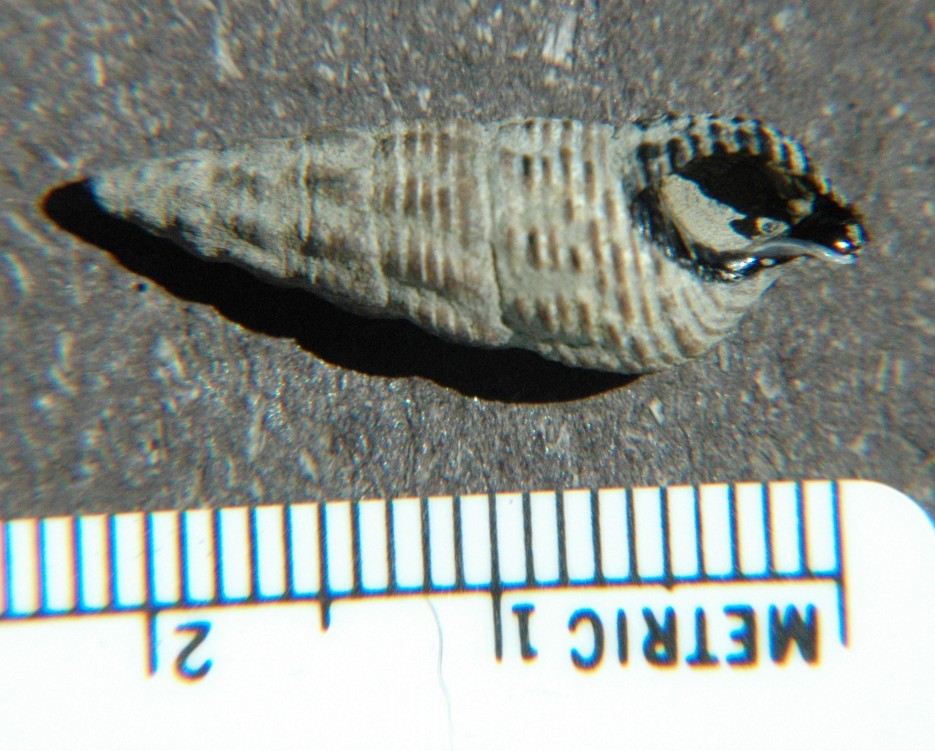How to Distinguish from Similar Species: There is only one (introduced) species from this family in this area, and this is the only locally common mudflat snail with a high, turreted shell. Among other turreted snails, this species can be distinguished from Cerithidea californica, the California horn snail, which lives farther south by the fact that the siphonal notch of C. californica is barely developed and does not twist sharply toward the midline (photo photo). C. californica also has a pallial eye on the edge of the siphon, which B. attramentaria does not have. Bittium spp. (Family Cerithiidae) also have a barely evident siphonal canal. They may have both spiral ridges and axial ribs, but the most common species, Bittium eschrichtii, has no axial ribs. Members of Family Cerethiopsidae ((e.g. Cerithiopsis spp.) have a siphonal canal which angles about 45 degrees toward the midline, may have well over 12 axial ribs, and rarely grow over 1 cm high. Exilioidea rectirostris (Family Neptuneidae) has a much more prominent siphonal canal (over 1/2 the height of the aperture) and prominent axial ribs but has only faint spiral ridges which do not form beads with the axial ribs.
Geographical Range: Japan, other areas of Asia from 40 degrees N to south of the equator. Common in several bays in California and the Pacific Northwest where oysters have been grown, at least up into British Columbia.
Depth Range: Mid to high intertidal.
Habitat: Lives on mud in salt marshes, especially in brackish waters.
Biology/Natural History: This species was introduced from Asia, probably along with oysters. Since they seem to remain in areas near where oysters were planted, their larvae probably have a very short or no pelagic stage. This species is slowly replacing the native snail Cerithidea californica in California bays where they coexist. Both this species and C. californica frequently are infested with abundant cercariae larvae from flukes (Trematodes), and serve as alternate hosts to the flukes which infect seabirds.
| Return to: | |||
| Main Page | Alphabetic Index | Systematic Index | Glossary |
References:
Dichotomous Keys:Carlton, 2007
Keen and Coan, 1974
Kozloff, 1987, 1996
General References:
Griffith, 1967
Harbo, 1997
Kozloff, 1993
Lamb and Hanby, 2005
Rice, 1973
Scientific Articles:
Web sites:
General Notes and Observations: Locations, abundances, unusual behaviors:
These occur abundantly on the soft mud west of March Point but are much less common on the harder mud east of March Point.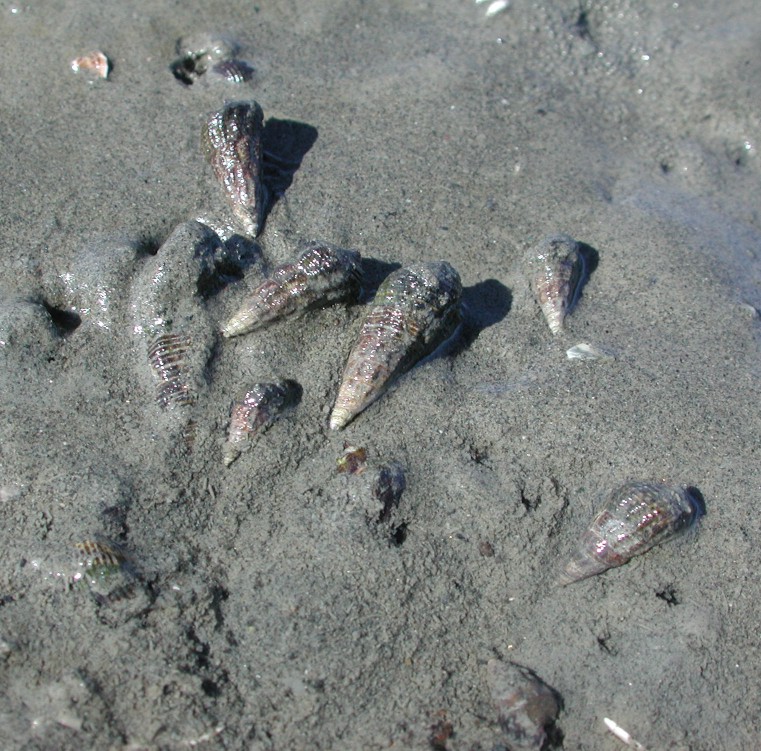
Batillaria attramentaria aggregated on a mudflat, Padilla Bay.
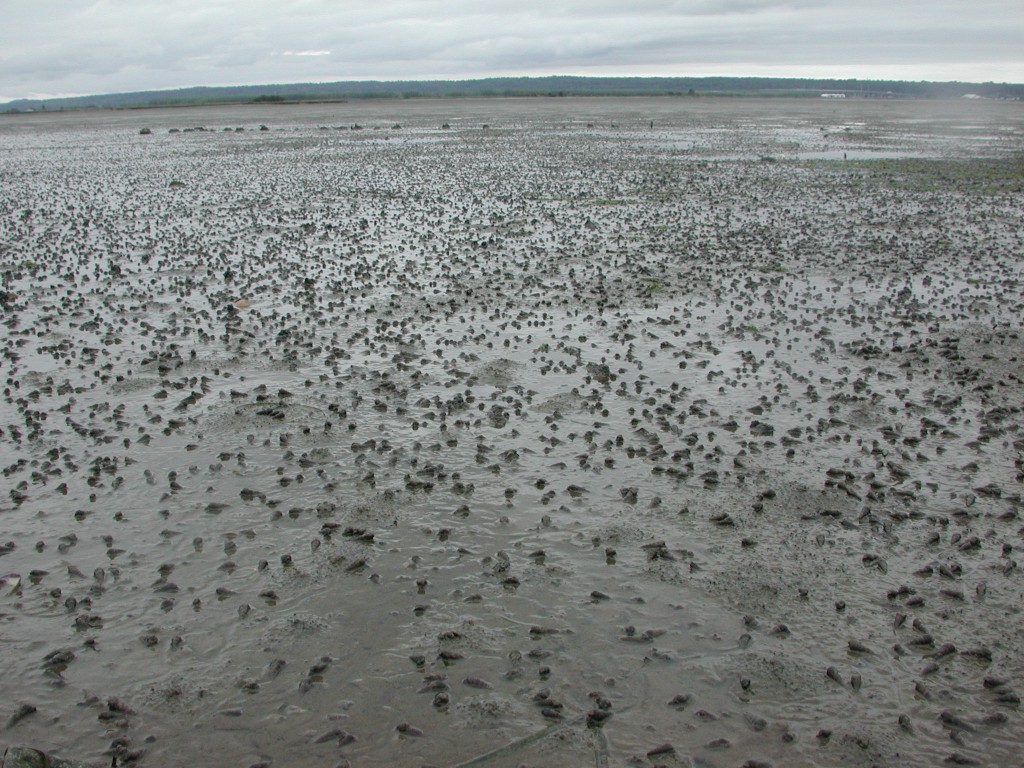
The aggregations can number in the millions and cover large stretches of the muddy portions of the bay.
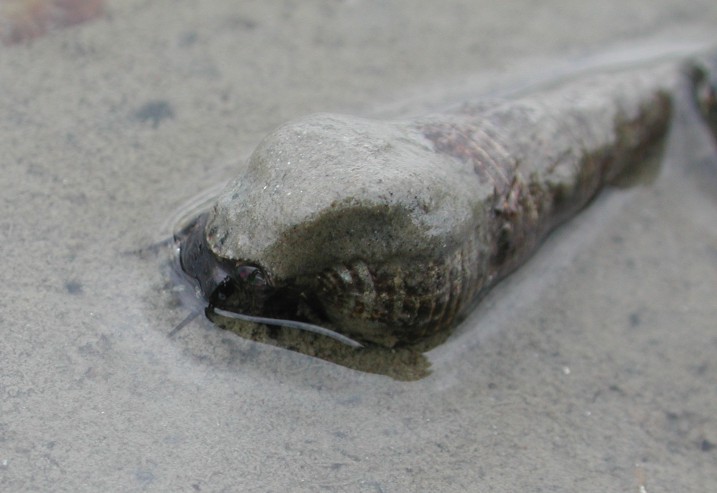
The snails rest on the mud aperture down. Some crawl along and feed on the mud, as this individual is doing. They are probably eating diatoms or cyanobacteria from the surface of the mud.
| Below are 3d images made of a Batillaria attramentaria snail 24 mm long. 3d images are made of a composite of 8-10 photos each at different depths so that the entire depth of field is in focus. Photos by Dave Cowles using a Keyence VHX-100 photomicroscope. |
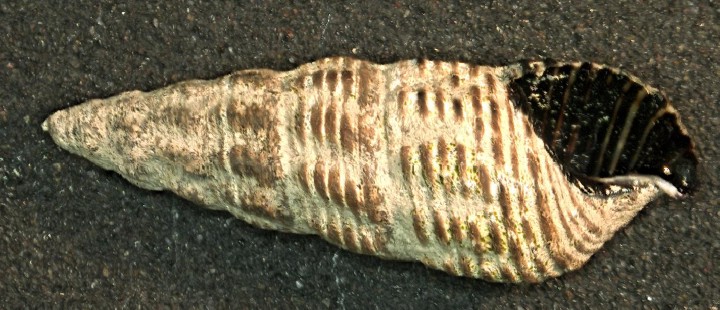 |
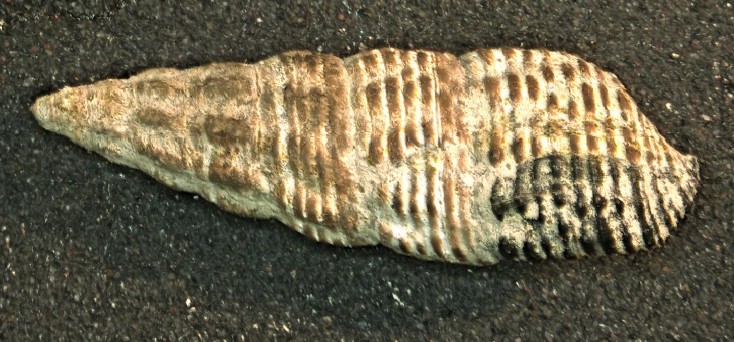 |
| These views can be contrasted with that of the California hornsnail, Cerithidea californica, which can be seen in aperture view and rear view by clicking these links. |
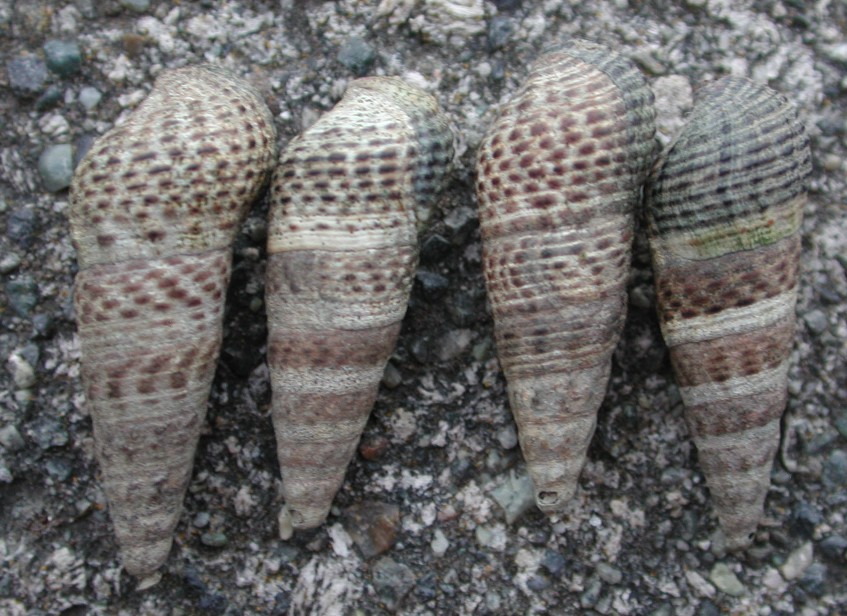
The snail can have a variety of color variations--combinations of spiral stripes, spots, and bands.
Authors and Editors of Page:
Dave Cowles (2009): Created original page
CSS coding for page developed by Jonathan Cowles (2007)
